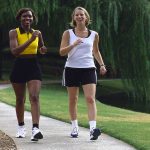
Living in the city can be hard on the senses and the spirit, but spending some time in a tree-lined park could counteract that stress, new research suggests. “Over a three-month period, we collected tweets from 4,688 Twitter users before, during and after they posted from the park,” explained study author Aaron Schwartz. He’s a Ph.D. candidate at the University of Vermont’s school of environment and natural resources and the Gund Institute for Environment. All of the 160 parks that were visited in the study were located in the city of San Francisco. About 100,000 tweets were analyzed by a hedonometer, a kind of online happiness dictionary that ranks words according to their happiness content. Tweeting “jail,” for example, would bank a score of less than 2, while a tweet of “hahaha” would render a score nearly 8. After comparing pre-park tweets to post-park tweets, the study authors concluded that parks trigger a mood bump equivalent to that seen at Christmas, the day hedonometer happiness levels hit their peak. The team didn’t track how long participants spent in parks, so they can’t say how short a visit might trigger a mood change. And some parks turned out to be better mood boosters than others. Large regional parks with lots of tree cover and vegetation conferred the biggest happiness lift, while paved urban plazas offered the… read on >

















